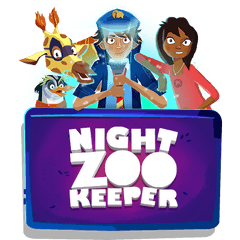Grade 5 Language Arts
Discover Grade 5 standards

Home > Language Arts > Grade 5
In fifth grade, children strengthen their foundational language arts skills, expanding their vocabulary, refining their writing techniques, and building their critical thinking. They learn how to organize ideas through planning, drafting, and revising, while applying correct spelling, grammar, and punctuation rules. With a greater emphasis on opinion, informative, and narrative writing, fifth graders learn to express their thoughts and ideas clearly and creatively, incorporating literary devices and critical analysis.

Reading
Grade 5 students are expected to read fluently and use phonics knowledge and context clues to understand more complex vocabulary. Fifth graders are also encouraged to broaden their vocabulary through the use of dictionaries and thesauruses, allowing them to replace words with synonyms, understand antonyms, and explore multiple meanings. A key part of reading comprehension at this stage is identifying the author’s purpose, which helps children think critically about why a text was written and how it conveys its message.
Another key skill built in Grade 5 is quoting and citing accurately from texts to support their ideas or answer questions about character emotions, settings, or key facts. They start to work with figurative language, specifically metaphors, learning to interpret the deeper meaning behind the author's word choices. This work improves their comprehension and critical thinking skills.
Spelling
Fifth graders are expected to apply a range of spelling strategies to spell words correctly, building on their knowledge of phonics, spelling patterns, word families, syllable patterns, and position-based spellings. At this level, children will master:
- words with silent letters
- using dictionaries for accuracy
- word parts such as prefixes and suffixes
- patterns, including "ou" and "who" words
- position-based spelling rules like "i before e except after c."
- word families, such as words derived from roots like "solve" or "weigh,"
- polysyllabic and compound words.
- Ending rules, such as adding "-ed" for past verb tense and "-ing" for present continuous
- Homophones, "allowed/aloud" and "descent/dissent"
Grammar
Children in Grade 5 expand their understanding to more complex grammatical concepts and sentence structures. They work with perfect verb tenses (past, present, and future) to connect events in time, while learning to recognize and correct shifts in verb tense. They practice crafting complex sentences by incorporating various parts of speech such as pronouns, prepositions, and conjunctions to improve the flow and clarity of their writing. The use of correlative conjunctions, like "either/or" and "both/and," also helps link ideas and phrases more effectively within their writing.
Fifth graders are introduced to interjections as a way to express sudden emotions, such as excitement or surprise, in their writing, enhancing their ability to create dynamic, engaging sentences.
Punctuation
In Grade 5, students are expected to use more advanced punctuation, building on what they've learned in previous grades. One important focus is mastering commas and semicolons, particularly in lists. Fifth graders also focus on using commas correctly in sentences, especially when punctuating adverbs and introductory elements, such as dependent clauses or adverbs followed by commas. Additionally, they practice using commas in dialogue, particularly when responding with "yes" or "no" and addressing others by name. This ensures their writing is clear and easy to follow, especially in conversations or detailed narratives. Another key area of focus is punctuating titles of works. Young learners are taught three different methods: underlining, using quotation marks, or applying italics.
Writing
In Grade 5, children build on their strong writing foundation, honing essential writing skills like clarity, creativity, and structure. They are encouraged to apply critical and creative thinking to their work while mastering spelling, grammar, and punctuation. At this stage, students are introduced to various types of writing, such as opinion pieces, informative essays, short stories, and letter writing, where they develop their ability to present a clear point of view. Throughout the process, they practice organizing their thoughts through planning, drafting, and revising, using workbooks and other tools to guide their learning. Answer keys are often included in these materials, allowing young learners to check their progress and refine their writing.
How Night Zookeeper can help

Night Zookeeper is an award-winning language arts program that makes reading and writing fantastically fun for kids! It features interactive games, skill challenges, creative writing prompts and engaging lesson series to build all your child's language arts skills. Our qualified tutors also give your child constructive, personalized feedback on their writing.
Give Night Zookeeper a try with a free 7-day trial!
Related articles


Make Reading & Writing Fantastically Fun!
- Award-winning reading & writing program for kids
- Improves spelling, grammar, punctuation & vocabulary
- Over 1,000 different learning games and activities



